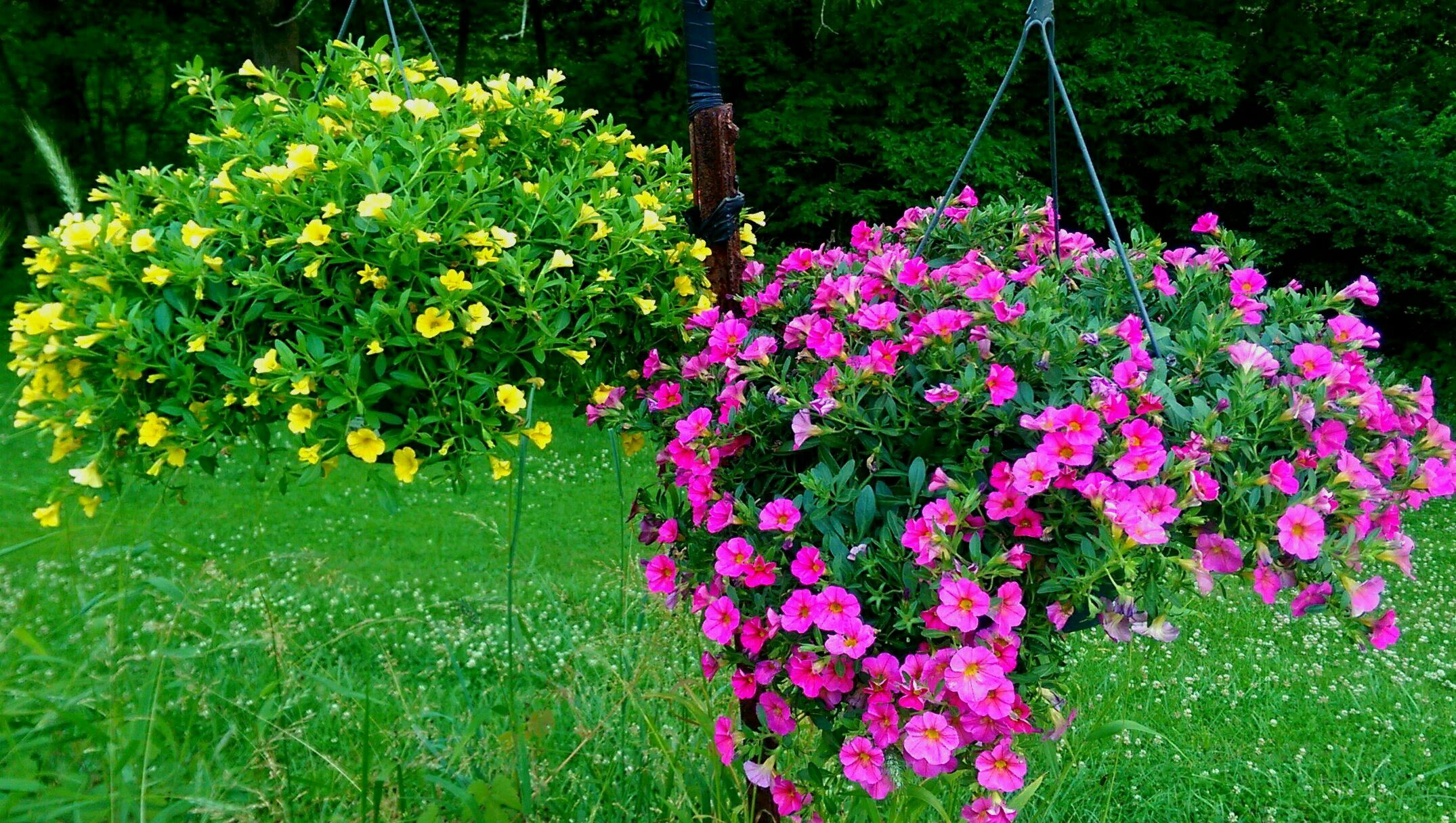Superbells are a popular variety of calibrachoa, a flowering plant known for their colorful, petunia-like blooms. As a gardener you may be wondering whether Superbells are annuals or perennials. Let’s take a closer look at these beautiful plants!
What are Superbells?
Superbells are a branded series of calibrachoa cultivars bred by Proven Winners. They are marketed as an improvement over traditional calibrachoa with larger blooms, better heat tolerance, and self-cleaning flowers that don’t require deadheading.
Superbells come in a wide range of colors like cherry red, orange pink yellow, white, blue, and more. The plants have a mounding, trailing habit and do well in containers, hanging baskets, and landscape beds.
Popular Superbells varieties include:
- Superbells Coralberry Punch
- Superbells Yellow
- Superbells Grape Punch
- Superbells Tropical Sunrise
- Superbells Red
Are Superbells Annuals or Perennials?
Superbells are tender annuals, meaning they complete their lifecycle in one growing season. Here are some key facts about their lifespan:
-
They are grown from seed and produce flowers and seed within a single season.
-
Superbells planted in spring will thrive all summer long but will die off with the first hard fall frost.
-
To enjoy them year after year, new Superbells plants must be replanted each spring.
-
They can be overwintered indoors in frost-free climates, but bloom production declines.
So in most regions, gardeners treat Superbells as fast-growing annuals. This allows enjoying their prolific blooms during the warm months when they thrive.
Growing Superbells as Annuals
Since Superbells are annuals, they are easy to incorporate into gardens and containers yearly. Here are some tips for growing them successfully:
-
Start seeds indoors 6-8 weeks before last frost. Transplant seedlings outside after hardening off.
-
Purchase potted Superbells plants from nurseries in spring and plant after danger of frost.
-
Space plants 12-24 inches apart in beds and containers. They spread 12-24 inches across.
-
Provide at least 6 hours of direct sun for the best flower production.
-
Water when the top inch of soil is dry. Don’t let them sit in wet soil.
-
Fertilize every 2 weeks with a balanced liquid fertilizer.
-
Pinch back leggy plants by 1/3 to encourage bushy growth.
-
Remove faded plants after first hard frost in fall.
When cared for properly, Superbells will reward you with masses of colorful, petunia-like blooms from spring through fall! Their long flowering season makes them a great annual choice.
Can Superbells Be Grown as Perennials?
While Superbells are technically annuals, some gardeners have had success overwintering them in frost-free climates. Here are a few tips for trying to grow them as short-lived perennials:
-
Select the most heat-tolerant varieties like Superbells Yellow or Coralberry Punch.
-
Provide bright light and temperatures above 50°F over winter.
-
Cut back and repot plants to induce new growth. Pinch back regularly.
-
Move outdoors once overnight lows stay above 45°F in spring.
-
Expect reduced flowering the second year as energy goes to propagation.
-
Take cuttings in summer to propagate new young plants.
-
Plan to replace original plants with fresh ones after 2 years.
With excellent care, you may be able to enjoy Superbells for more than one season in zones 9-11. But bloom quality declines, so it’s usually best to replace them annually.
Why Grow Superbells?
No matter if you grow them as annuals or try for short-lived perennials, Superbells offer great benefits to gardens and containers such as:
-
Long bloom season from spring to fall.
-
Vibrant flower colors that attract pollinators.
-
Self-cleaning, low maintenance habit.
-
Trailing and mounding growth perfect for hanging baskets.
-
Excellent tolerance for hot and dry conditions.
-
Less susceptible to diseases like other calibrachoa.
Superbells add a colorful punch of flower power that blooms reliably from spring through fall. Give them a try this year if you don’t already grow these popular annuals!
Planting Superbells + Care Tips! // Garden Answer
FAQ
Are superbells a perennial?
Do calibrachoas come back every year?
Will Superbells come back?
Should Superbells be cut back?
Are superbells perennials?
Superbells (Calibrachoa) look like tiny petunias, but there is nothing tiny about their show-stopping color from spring until fall. This series of tender perennials can be grown as an annual in colder regions but survives as a perennial in U.S Department of Agriculture plant hardiness zones 9 through 11, reports Missouri Botanical Garden.
Are superbells Calibrachoa annuals?
Superbells®. Superbells® Calibrachoa are excellent summer performing annuals, as long as their needs are met. They are heat tolerant, will tolerate dry conditions and bloom prolifically all summer without deadheading . As with most plants, the critical elements for success are sun, fertilizer, soil and water.
How much sun do Superbells need?
Superbells need a lot of sun for optimal growth and blooming. While the sun gives plants energy, the minerals and nutrients in plant food give the plants what they need to grow new leaves and flowers. If your Superbells are growing in full sun but have stopped blooming well, they may not be getting enough nutrients.
Can superbells bloom all summer without deadheading?
They are heat tolerant, will tolerate dry conditions and bloom prolifically all summer without deadheading . As with most plants, the critical elements for success are sun, fertilizer, soil and water. Having great looking Superbells® all summer takes providing for these needs.
- A Complete Guide to Caring for Yuki Cherry Blossom Shrub - January 23, 2025
- Identifying Red Hot Poker Seeds: What to Look For When Harvesting Torch Lily Pods - January 23, 2025
- A Complete Guide to Harvesting Evening Primrose Seeds - January 23, 2025

